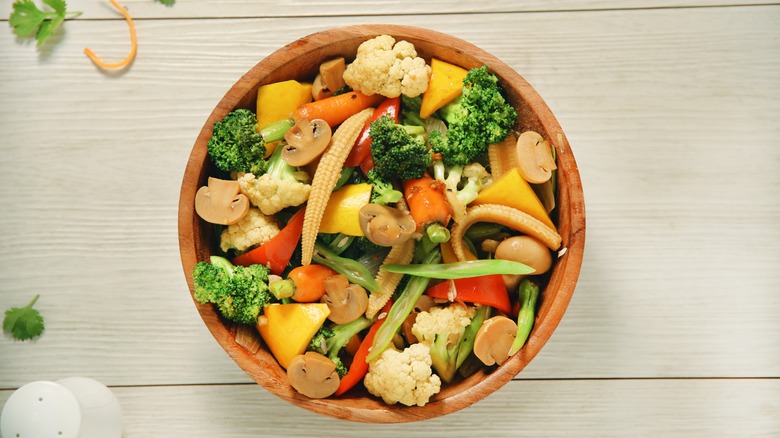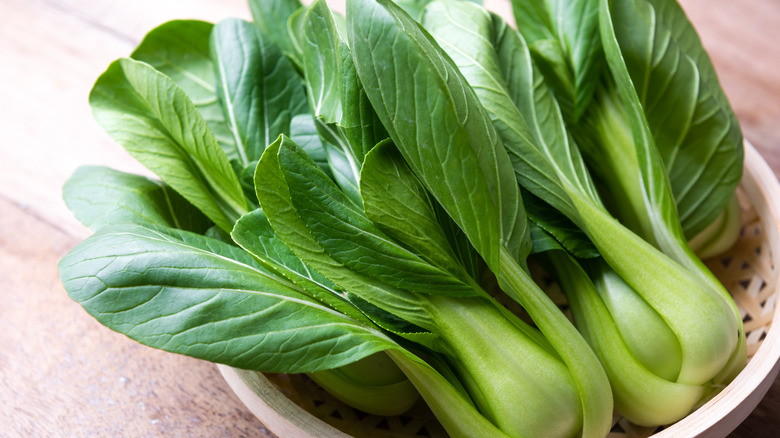How To Make Chinese Takeout-Style Veggies At Home
Americans are making a concentrated effort to eat out less often — data collected in 2024 by the Ipsos Consumer Tracker found one-third of United States residents are no longer attending fast casual restaurants and snagging fast food meals as frequently as they once did. This also means that cooking at home has gotten a lot more popular (and necessary). If you've said goodbye to your weekly Chinese takeout, and hello to preparing the cuisine in your own kitchen, but you are struggling to perfect the veggies that a dish calls for, we have some solutions. It's time to adhere to the lessons provided by chef Michael Schukar of Toku, with whom Food Republic had the opportunity to speak.
According to the expert, whether you are cooking with bok choy, cabbage, or adding florets of broccoli to a takeout-style beef dish, your first step should be "cutting the vegetables into uniform sizes," as it helps them cook evenly, and keeps larger pieces from undercooking and smaller pieces from overcooking. This step really does make a difference, and not just for even cooking; similarly-shaped veggies also helps the dish come together flavor-wise. Proper preparation also extends to the flavor additions you plan to incorporate. "I always recommend prepping your sauce before you start cooking; that way, you're not risking anything burning," Schukar explained. He mentioned that when he cooks at home he "loves using oyster sauce," on his veggies, telling us that "it adds a rich, savory depth that brings everything together."
Selecting the best vegetables for your takeout fake-out
Of course, your Chinese takeout-style veggies will always be better when you choose high quality ingredients in the first place. Chef Michael Schukar advised, "When selecting produce, look for firm vegetables with no discoloration or soft spots." Vegetables with these characteristics are good indicators that they are both fresh and at peak ripeness. The expert also recommended not using frozen veggies when preparing Chinese food if at all possible. This is because they put off water when cooking which, in turn, steams the vegetables instead of stir frying, resulting in a very different cooked outcome. "Less moisture means better texture and a cleaner, more pronounced flavor on the plate," he said. Of course, if fresh is not an ideal option for you, there are ways to cook with frozen veggies that will get as close to the real thing as possible, texture wise.
As for the best types of vegetables to use, Schukar singled out baby bok choy — which should be quickly cleaned for better stir-fry – and snap peas as two of his favorites to cook up when making Chinese cuisine at home: "They're crisp, vibrant, and bring great texture to any dish." But you can and should shop whatever is in season, especially at farmer's markets, for the ultimate in freshness and ripeness. That might mean cabbages and broccoli in the cooler months, or Chinese okra (the spice sponge) and Chinese eggplant when it's warmer.


